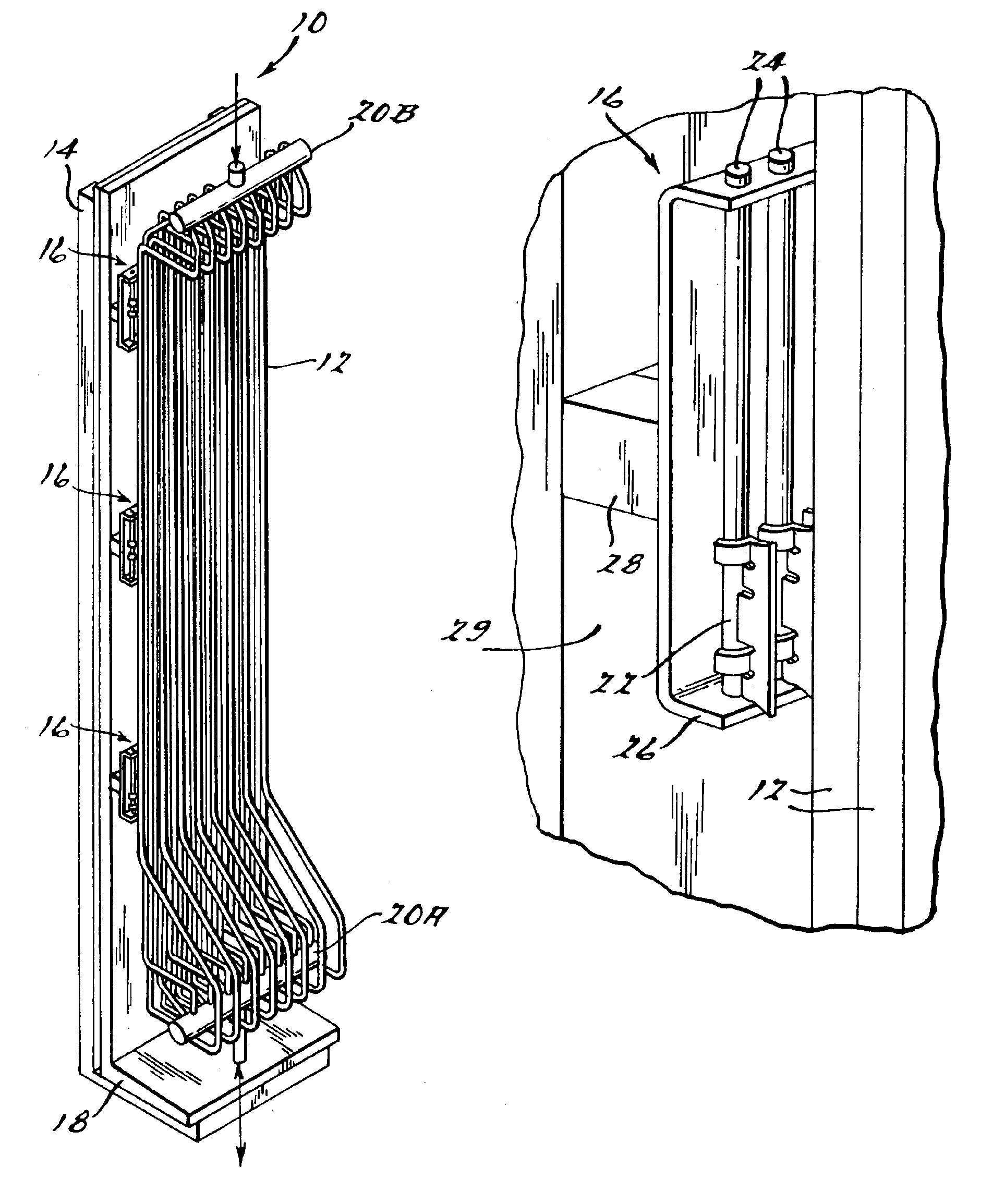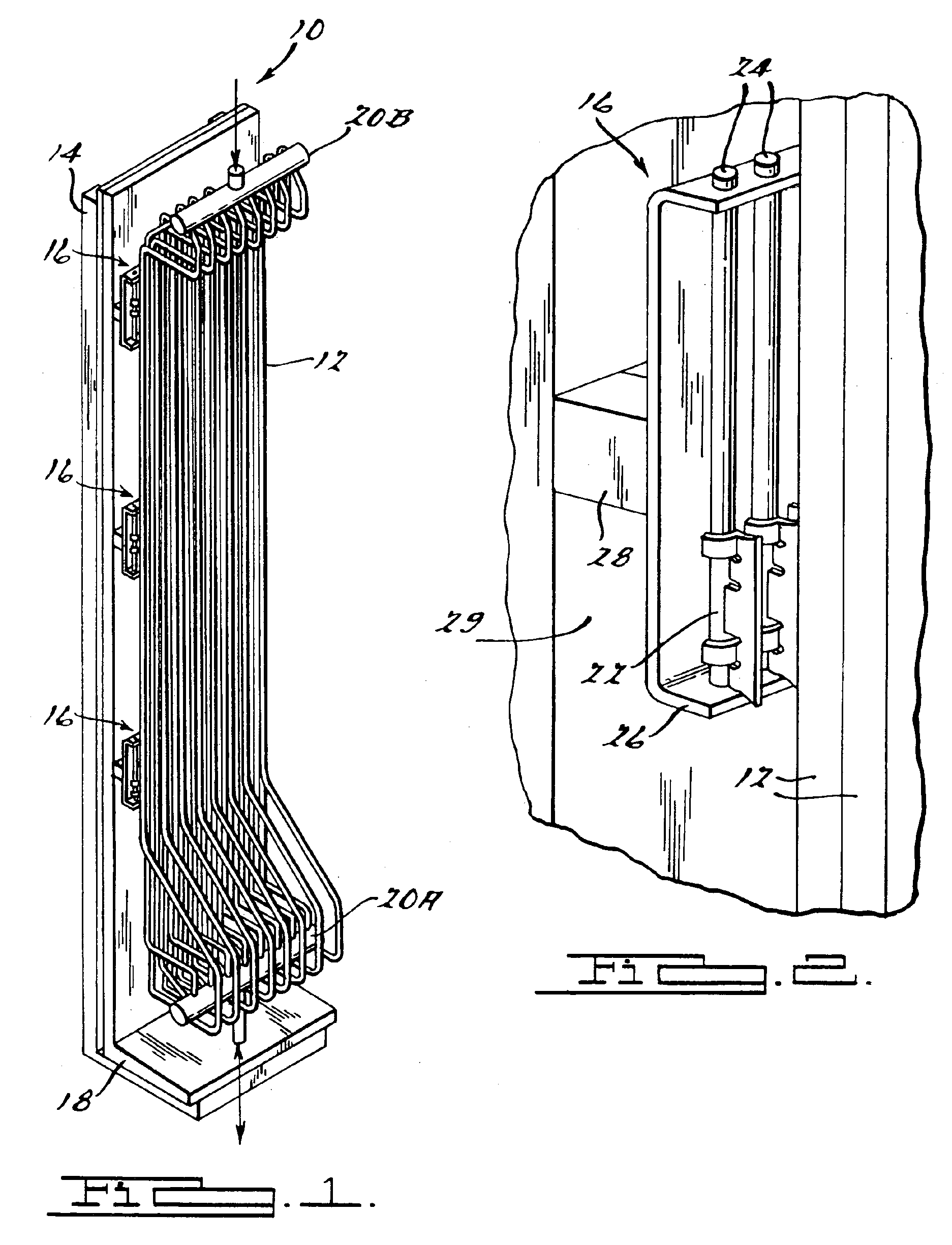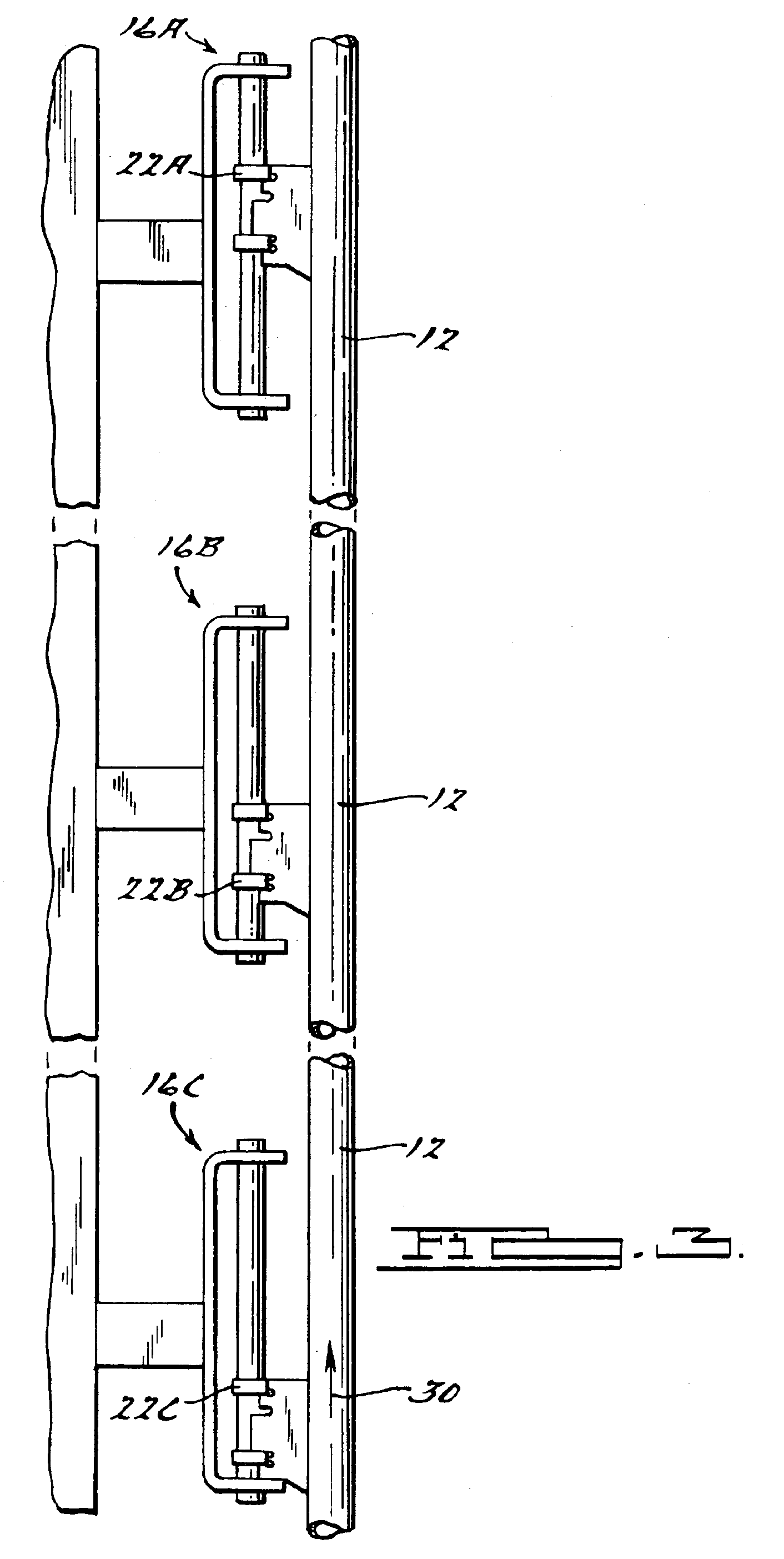Bottom supported solar receiver panel apparatus and method
a solar receiver and bottom support technology, applied in the field of solar receiver panels, can solve the problems of reducing the number of valves required in comparison to the top supported receiver, requiring long pipe runs, and unable to meet the needs of large-scale conversion of solar energy into electricity, etc., to achieve the effect of reducing the length of piping, facilitating maintenance, and reducing the number of valves
- Summary
- Abstract
- Description
- Claims
- Application Information
AI Technical Summary
Benefits of technology
Problems solved by technology
Method used
Image
Examples
Embodiment Construction
[0016]The following description of the preferred embodiment(s) is merely exemplary in nature and is in no way intended to limit the invention, its application, or uses.
[0017]Initially, a general description of the construction and operation of a solar power tower will be provided. A solar power tower is used to collect solar thermal energy and convert it into electricity. A large number of sun-tracking mirrors called heliostats collect the solar energy. The collected solar energy from the heliostats is redirected and concentrated onto a solar receiver mounted on top of the solar power tower. The solar receiver can be constructed by various methods. The present invention is adapted for a solar receiver that functions as a heat exchanger. The receiver functioning as a heat exchanger transfers the concentrated solar energy redirected from the heliostats to a fluid circulated through a piping system inside the receiver.
[0018]The fluid inside the receiver functions as an energy transfer ...
PUM
 Login to View More
Login to View More Abstract
Description
Claims
Application Information
 Login to View More
Login to View More - R&D
- Intellectual Property
- Life Sciences
- Materials
- Tech Scout
- Unparalleled Data Quality
- Higher Quality Content
- 60% Fewer Hallucinations
Browse by: Latest US Patents, China's latest patents, Technical Efficacy Thesaurus, Application Domain, Technology Topic, Popular Technical Reports.
© 2025 PatSnap. All rights reserved.Legal|Privacy policy|Modern Slavery Act Transparency Statement|Sitemap|About US| Contact US: help@patsnap.com



